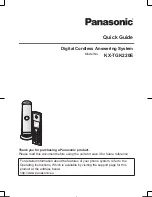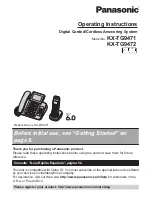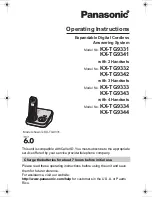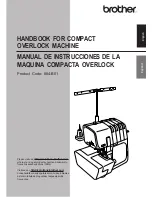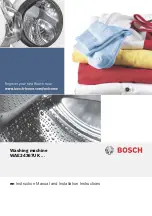
1
IMPORTANTES INSTRUCCIONES DE SEGURIDAD
Este instrumento se conforma con directivo de CEE 89/336/EEC
cubriendo supresión contra interferencia de radio.
Cuando se usa un aparato eléctrico, debe seguirse unas precauciones básicas y que vienen
incluidas a continuación.
"Leer las instrucciones antes de usar la máquina de coser."
PELIGRO-
1. La máquina no debe dejarse nunca desatendida mientras esté conectada. Desconectar la máquina de la red
eléctrica inmediatamente después de su uso y antes de limpiarla.
2. Desconectar la máquina de la red antes de cambiar la bombilla.
Colocar una bombilla del mismo tipo con una potencia de 15 Watios.
CUIDADO-
1. No usar la máquina como un juguete.
Prestar atención si fuese necesario cuando la máquina está siendo usada por niños o cerca de ellos.
2. Usar la máquina de coser solamente como se describe en este manual.
Usar únicamente los accesorios recomendados por el fabricante y que vienen especificados en este manual.
3. No trabajar nunca con la máquina en caso de que tenga el cable o el enchufe en malas condiciones, si no cose
correctamente, en caso de que se haya caído, haya sido dañada o se haya mojado.
4. No usar la máquina con los orificios de ventilación bloqueados. Mantener los orificios de ventilación de la
máquina de coser y el pedal sin acumulación de polvo, suciedad y restos de tejido.
5. No introducir no insertar objetos en los orificios de ventilación.
6. No usar al aire libre.
7. No usar mientras se estén utilizando productos aerosoles (spray) o en lugares donde se esté administrando
oxigeno.
8. Para desconectar, girar el interruptor hasta la posición Off ( "0" ), luego desconectar el enchufe de la red.
9. No desconectar el enchufe tirando del cable. Para desconectar, tirar de la clavija, no del cable.
10. Mantener los dedos alejados de todas las partes movibles de la máquina. Tener un cuidado especial con la
aguja.
11. Usar siempre la placa de agujas apropiada. Una placa de agujas impropia puede producir la rotura de la aguja.
12. No usar agujas despuntadas.
13. No presionar ni tirar del tejido mientras se está cosiendo. Esto podría doblar la aguja y romperla.
14. Situar el interruptor principal de la máquina en posición Off ( "0" ) cuando se realice algún ajuste en el área de la
aguja como enhebrar la aguja, cambiar la aguja, cambiar la canilla, cambiar el pie prensatelas y similares.
15. Desconectar siempre la máquina de la red eléctrica cuando se retiren las tapas, para lubricar, o cuando se
realice algún otro tipo de ajuste mecánico mencionado en el manual de instrucciones.
CONSERVE ESTE MANUAL DE
INSTRUCCIONES
Esta máquina de coser es para uso doméstico
Para reducir el riesgo de quemaduras, fuego, descargas
eléctricas o causar daños a personas.
Para reducir el riesgo de una descarga eléctrica.
Este equipo está etiquetado con el símbolo de reciclado que puede verse arriba. Esto quiere
decir que al final de la vida del equipo, éste debe ser llevado a un punto de recogida específico
para equipos electrónicos, y no a los contenedores normales de residuos domésticos. Esto
beneficiará al medio ambiente para todos. (Sólo Unión Europea)
Summary of Contents for HZL35Z-UL5
Page 2: ...2 ...

















